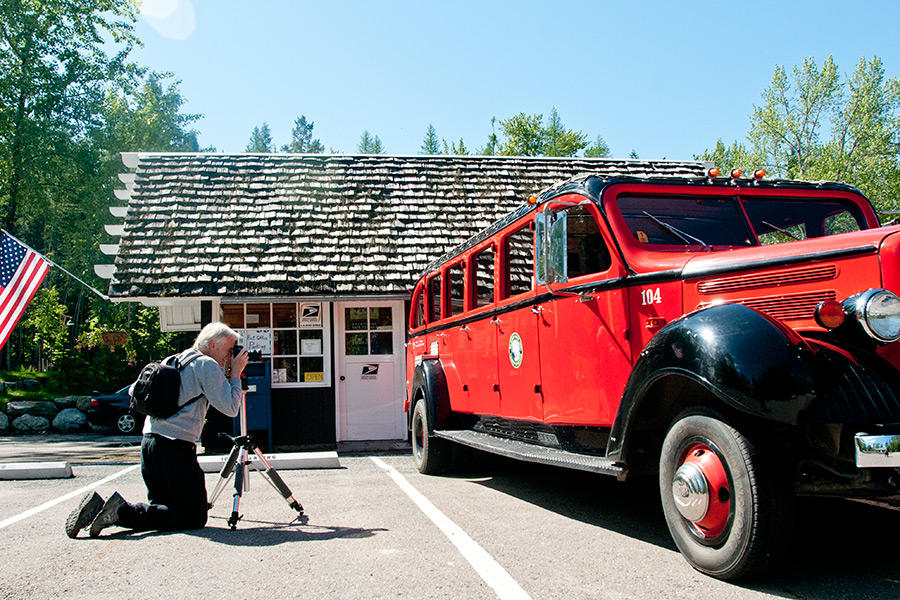Flathead Leads State in Visitor Spending
Travelers spent $3.8 billion statewide in 2014, with the Glacier area accounting for highest percentage
By Tristan Scott
Tourism continues to shine as a bright spot on the state’s economic horizon, and Flathead County is taking the lead in Montana in terms of visitor spending, according to a new report analyzing spending.
Nonresident travelers spent an estimated $3.8 billion across Montana in 2014, according to figures from the Institute of Tourism and Recreation Research at the University of Montana, which reports a 9 percent increase in nonresident spending over the previous year.
The Glacier travel region, which includes Flathead County and Glacier National Park, received the highest percentage of nonresident spending with one-third of the state’s multi-billion-dollar total, while the Yellowstone region garnered 26 percent.
Meanwhile, Flathead County tallied $668 million in tourist dollars, edging out Gallatin County’s $662 million in spending as the leading county in nonresident traveler expenditures and, in doing so, bucking an historic trend.
“We’re always on Gallatin County’s heels, so this was a surprise,” Dylan Boyle, director of the Whitefish Convention and Visitor Bureau, said. “Last year, we had 1.2 million fewer visitors to Glacier than Yellowstone, and yet we exceeded them spending-wise.”
“The fact that Glacier’s travel region had 33 percent of nonresident spending for the entire state is just astounding,” Boyle said.
Although the increasing rate of visitation to Montana has slowed in recent years, spending continues to grow at a breakneck pace. According to Voices of Montana Tourism, since 2010 annual nonresident spending has increased by more than 52 percent while annual visitation has grown by less than 6 percent annually.
Boyle attributed the disparity between the robust spending patterns and the flat growth in visitation in the Flathead Valley to the type of visitor the region draws, a profile the state and region have been working to attract for years – the so-called “Geotraveler.”
“The whole idea behind the Geotraveler is that they are a high-yield, low-impact traveler who is willing to spend the money to buy local and experience things that are unique to the place,” Boyle said. “They really want to experience that place and they are spending in patterns.”
A prime example is the presence of farmers markets in the top-15 areas of visitor spending, with the hyper-local events accounting for $2.69 million in Flathead County alone, the first time the economic impact of farmers markets has appeared as a metric in the report.
“That is a perfect example. Farmers Markets aren’t tourism-driven events, and they’re going because they meet local residents, talk to local vendors and buy local products,” Boyle said. “It might be more expensive, but it’s a unique experience and that’s what the Geotourist is seeking.”
Tourism and recreation remained the most powerful economic current in the region, with northwest Montana’s historic downtowns and wide-open spaces – and Glacier National Park as its centerpiece – driving the economy in new directions.
Another unique characteristic of visitors’ spending patterns in Flathead County is that fuel wasn’t a top expense, placing third at $106 million, behind retail ($173 million) and restaurants ($135 million).
“Although Montana is predominantly a drive-in market, once they arrive in the Flathead and Glacier they are not spending as much on gas because they are here, and they want to stay here,” Boyle said.
Diane Medler, director of the Kalispell Convention and Visitors Bureau, said it’s testament to the unique experiences afforded in the Flathead Valley that retail sales and restaurant and bar expenditures outpaced gasoline.
“We do a variety of marketing to get them here but just as important is their experience during their visit,” Medler said. “We promote ways to be part of our community: to eat in locally owned restaurants, engage with local artisans and agricultural products, participate in local events – all served up with friendly and welcoming hosts (our residents and business owners). What the traveler remembers is the unique character and charm of the Flathead Valley along with the spectacular scenery and outdoor adventure.”
Statewide, the figures rank tourism as the second largest industry in the state, behind agriculture.
“Nonresident spending is a significant contributor to Montana’s economy,” according to the report. “Money spent by those traveling to and through the state has an effect not only on the businesses where spending occurs, but it ripples throughout Montana’s economy, both locally and regionally.”
In terms of tourism, there could be a decline in Canadian visitors as the exchange rate becomes less favorable, but from a travel standpoint, the low cost of gasoline could spur further travel from across the U.S.